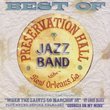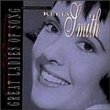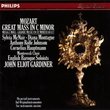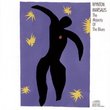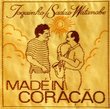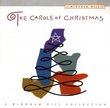| All Artists: Johann Sebastian Bach, Glenn Gould Title: Bach: 7 Toccatas BWV 910-916 Members Wishing: 0 Total Copies: 1 Label: Sony Release Date: 4/19/1994 Genre: Classical Styles: Historical Periods, Baroque (c.1600-1750), Modern, 20th, & 21st Century Number of Discs: 2 SwapaCD Credits: 2 UPC: 074645261225 |
Search - Johann Sebastian Bach, Glenn Gould :: Bach: 7 Toccatas BWV 910-916
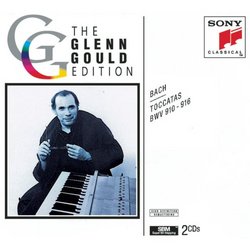 | Johann Sebastian Bach, Glenn Gould Bach: 7 Toccatas BWV 910-916 Genre: Classical
![header=[] body=[This CD is available to be requested as disc only.]](/images/attributes/disc.png?v=430e6b0a) ![header=[] body=[This CD is available to be requested with the disc and back insert.]](/images/attributes/disc_back.png?v=430e6b0a) ![header=[] body=[This CD is available to be requested with the disc and front insert.]](/images/attributes/disc_front.png?v=430e6b0a) ![header=[] body=[This CD is available to be requested with the disc, front and back inserts.]](/images/attributes/disc_front_back.png?v=430e6b0a) |
Larger Image |
CD DetailsSimilar CDsSimilarly Requested CDs
|
CD ReviewsHe waited too long Bradley P. Lehman | Dayton, VA USA | 02/15/2001 (2 out of 5 stars) "I've been a committed Glenn Gould fan for more than 20 years, listening to almost everything he ever recorded and reading deeply into the Gould literature. Generally I find his performances engrossing and stimulating. And I like these pieces: I play them myself on harpsichord and organ. They're not Bach's best work, but they're still effective if played with dramatic flair, like the music of Bohm and Buxtehude.Within that context, I think Gould's set of the Bach Toccatas is far below his own phenomenal standards. Some of his recordings really deserve five stars, such as his WTC or his 1955 Goldbergs or his Brahms intermezzi or his Schoenberg. But this set is far from those. Dramatic and improvisatory pieces such as these just weren't Gould's cup of tea (or bottle of Poland water). He didn't like them, and he tried to make them into something they're not.Gould's way with the e minor is the best of the set. He did this one in 1963 when he was still playing Bach more naturally than cerebrally (or deconstructively, or whatever). He uses subtle rubato, natural dynamic gradation, and conveys easy musicality. There is no especially odd ornamentation or affected arpeggiation. The performance flows well. The sound is dimmer than in the other toccatas, but the playing is so much more alive. This terrific performance shows that Gould *was* aware of the drama in the toccatas...he just chose to stop playing them that way later.I can pretty well tolerate his performances of the G major, g minor, and c minor, all from 1979, though I'm not particularly excited about them either. His clarity and momentum go a long way toward projecting these pieces (it's one way to play them...). The performances are one-dimensional overall: rhythmically stiff and hard-driven. Yes, even the slow sections are stiff, and the c minor's second section is unbelievably slow. On the surface, the fast parts sound lively with Gould's aggressive articulation, but there are some long stretches of unvaried touch that get monotonous.Now, the bad news: the rest of them, from 1976. The d minor is a boring performance (by Gould standards). I have listened to it repeatedly and still keep wandering away every time. Somehow it seems like a "contractual obligation" performance, like some of his Mozart. Gould doesn't sound particularly involved with or committed to the music, but merely gets all the notes with little inflection or direction. So what?His performance of the D major is frustratingly anti-physical, and this is Bach's most obviously exuberant toccata! It needs the flash, the flourish, the panache. This is the Gould of the experimental Beethoven "Appassionata" of ten years earlier: he slows it way down, dissects it motivically, drains the lifeblood out of it. The result is interesting, but it's not Bach. And as with the "Appassionata," Gould spends the last few minutes halfway redeeming himself by playing cleanly and normally. If he was going to deconstruct the piece anyway, why not finish the job?The f# minor is a willful mess. Gould pulls out his eccentric tricks that also plague the English Suites 3-6 and the violin sonatas (all his Bach from 1974-6!): artificial staccatos, extreme tempos, arbitrarily mannered arpeggiations, very measured trills. It's a display of excessive control and clever idiosyncracy rather than going with the flow and bigger gestures of the music. Even his rubato is stiff: he places every note, rather than letting them happen in natural groupings. And he omits 14 bars, presumably in an attempt to improve the composition! Technically, some of the splice points in fast sections are too obvious and distracting. Yes, the performance holds the attention, but there's just too much that's weird about it to convince me. (His recording with Leonard Rose of the viola da gamba sonatas is even weirder, but redeemed by being more playful.) The tricks were plentiful in the D major, too, but that one was already lost with his anti-dramatic approach. What was he thinking?If I sound rough on Gould in my disenchantment with these performances, at least it's consistent: I think all his solo Bach recorded before 1970 is marvelous, but then it dropped off quickly after that. His style went around the bend there in the 1970's. It changed from "Bach's music as played by Glenn Gould" to "Glenn Gould's didactic ideas about Bach." It seemed that he stopped trusting Bach's ability to make points on his own. He started coloring the music with heavy fluorescent markers rather than simply playing it. Cerebral dissection replaced straightforward joy and physical expression. Naturally dynamic phrasing and articulation went out the window. Artifice replaced art.Recorded over a span of 16 years, this set of the Toccatas is a microcosm of those changes in Gould's approach to Bach. He sounds like four different people here: one with a naturally musical style and a sense of fun playing Bach, but the other three too concerned with being Glenn Gould.To sum up, I wish Gould had gone ahead with all seven of the toccatas in the mid-1960's when he recorded the e minor. This set could have been great, but it's just too uneven and bizarre to earn more than two stars." So where are the three and two part inventions? V. Vo | Los Angeles, CA USA | 10/19/2001 (5 out of 5 stars) "Before the Glenn Gould Edition was created, most of the Glenn Gould discography was availible on CBS recordings. The toccatas and the two and three part inventions were coupled together on two CD's, but apparently Sony Classical thought it would be better to take away the two and three part inventions from the set and sell it separately. This is the same company that turned the talentless Charlotte Church into a star and didn't allow Philips Classics to allow the best works of Glenn Gould in their "Great Pianists of the 20th century" series. ANyhow, the toccatas are a particular favorite of mine. These are relatively early keyboard works of Bach, yet they somehow are one of his most dramatic outputs. Glenn Gould certainly brings these works to light. I would like to bring attention to three stunning toccatas in particular the c-minor, e-minor, and d-minor.The c-minor is a stunning display of counterpoint at the highest speed possible. My goodness, the final two sections of this toccata just has to be heard. The last section in particular has two subjects that are completely different, yet Gould manages to play it with an incredible discipline and control.The e-minor is a joy to listen to and the last section of it is outstanding. The d-minor is a complete tour de force. It is a powerful work and it certainly allows Gould to take his time and essentially build up the tension until the final section where his counterpuntal mastery takes over to a sheer outburst of passion." When does 2+0=3? Answer below. David K. Hill | 03/11/2001 (5 out of 5 stars) "Sony Classical bought CBS Records a number of years ago, and they have wasted no time in repackaging Glenn Gould's recordings to effectively raise the cost to the consumer. These CDs illustrate the point. Before Sony entered the picture, CBS offered the complete Bach Toccatas, complete Two-Part Inventions, and complete Three-Part Inventions on 2 CDs. Sony removed the Inventions from the set, leaving you with the Toccatas alone at the same price! The Inventions are still available from Sony, but now on a separate CD. It doesn't take a genius to figure out that two CBS CDs (plus nothing more) = three Sony CDs, in effect a 50% price hike. Which is music to Sony's ears, no doubt.Five stars for Glenn Gould, no stars for Sony."
|

 Track Listings (3) - Disc #1
Track Listings (3) - Disc #1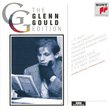
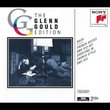

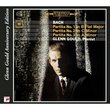
![The Very Best of the Platters [Mercury]](https://nationalbookswap.com/cd//m/61/5361/15361.jpg)
